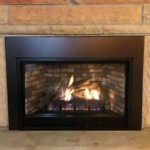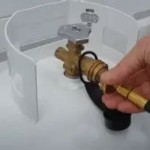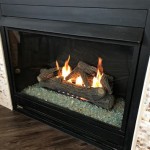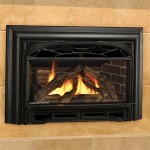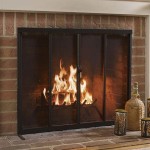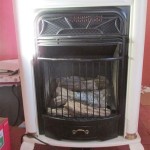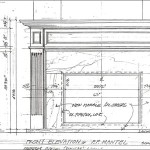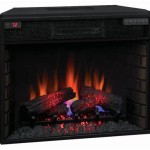Gas Fireplace Blower Fan Not Working: Troubleshooting and Solutions
A gas fireplace provides both aesthetic appeal and supplemental heating, enhancing the comfort of a living space. A key component contributing to the fireplace's heating efficiency is the blower fan. This fan circulates the warm air generated by the fireplace into the room, distributing heat more effectively than relying solely on radiant heat. When the blower fan malfunctions, the fireplace's heating capacity is significantly reduced, leading to uneven heating and potentially negating one of the primary benefits of owning a gas fireplace. Addressing the underlying cause of a non-functional blower fan is crucial to restoring the fireplace's optimal performance.
Several factors can lead to a gas fireplace blower fan ceasing to operate correctly. These issues range from simple power supply problems to more complex component failures. A systematic approach to troubleshooting helps identify the specific cause and allows for targeted repairs or replacements. Ignoring the problem can lead to further damage to the fireplace or even pose safety risks. Therefore, a prompt and thorough investigation is recommended when the blower fan malfunctions.
Power Supply and Electrical Connections
The most basic, yet often overlooked, cause of a non-functioning blower fan is a lack of power. Begin by confirming that the fireplace is properly plugged into a functioning electrical outlet. Test the outlet using another appliance to ensure it is delivering power. If the outlet is confirmed to be working, inspect the power cord connected to the fireplace for any signs of damage, such as fraying or cuts. Damaged power cords should be replaced immediately by a qualified technician.
Inside the fireplace unit, examine the electrical connections to the blower fan motor. These connections are typically made using wire connectors or spade terminals. Ensure that all connections are secure and free from corrosion. Loose connections can interrupt the flow of electricity to the fan motor. Disconnecting and reconnecting these connections can sometimes resolve the issue, however, it is critical to ensure the power to the fireplace is disconnected prior to any electrical work.
Many gas fireplaces incorporate a wall switch to control the blower fan. Verify that this switch is in the "on" position. If the switch appears to be functional, test it using a multimeter to confirm that it is properly conducting electricity. A faulty switch can prevent power from reaching the fan, even if all other connections are intact. Replacing the switch may be necessary if it is determined to be defective.
Thermal Sensor and Switch Issues
Gas fireplaces frequently utilize a thermal sensor or switch to regulate the blower fan operation. This sensor is designed to activate the fan only when the fireplace reaches a certain temperature, preventing cold air from being circulated into the room. If the thermal sensor malfunctions, it may not trigger the fan even when the fireplace is sufficiently heated.
Locate the thermal sensor, typically situated near the firebox or heat exchanger. Inspect the sensor for any signs of damage or corrosion. A visual inspection may reveal obvious problems, but a multimeter is required to accurately test the sensor's functionality. The sensor should exhibit a change in resistance as the temperature increases. If the sensor fails to respond to temperature changes, it likely needs replacement.
Another type of thermal control used is a thermal disc switch. These switches are designed to close a circuit and activate the fan when the temperature reaches a preset threshold. A faulty thermal disc switch can prevent the fan from operating, even with sufficient heat. Use a multimeter to test the continuity of the switch. If the switch does not close when heated, it needs to be replaced. The replacement switch should match the original specifications for temperature rating to ensure proper operation and safety.
Blower Fan Motor Problems and Maintenance
The blower fan motor itself can be the source of the problem. Over time, the motor can become worn, its bearings can dry out, or it can accumulate dust and debris that impede its operation. These issues can lead to a decrease in performance or complete failure of the fan motor.
Visually inspect the fan blades for any obstructions, such as debris or foreign objects. Clean the fan blades thoroughly using a brush or vacuum cleaner. Dust accumulation can significantly reduce the efficiency of the fan, even if the motor is functioning correctly. Lubricating the motor bearings can sometimes revitalize an aging fan motor. Use a specifically designed lubricant for electric motors, applying it sparingly to the bearings.
If the blower fan motor emits unusual noises, such as grinding or squealing, it may indicate internal damage or worn bearings. A multimeter can be used to test the motor windings for continuity. If the windings are open or shorted, the motor needs replacement. Replacing the entire blower fan assembly is often the easiest and most reliable solution, ensuring proper fit and performance.
In some instances, the blower fan motor may have a capacitor that assists with start-up. A failing capacitor can prevent the motor from starting or cause it to run intermittently. Testing the capacitor requires a multimeter capable of measuring capacitance. If the capacitor's measured value is significantly below its rated value, it should be replaced. Ensure the replacement capacitor matches the original specifications in terms of capacitance and voltage rating.
After addressing each of these potential causes, reassemble the fireplace components and test the blower fan's operation. If the fan still fails to function, consulting a qualified gas fireplace technician is recommended. Attempting complex repairs without the proper training and tools can lead to further damage or safety hazards.

Noisy Gas Fireplace Blower Here S How To Replace It Diy

Why Fireplace Blower Not Blowing Air Reasons Fixes

When Does A Fireplace Blower Turn On Or Off Tips

Fireplace Blowers Explained How Fans Work Regency

Heatilator Gas Fireplace Troubleshooting

When Does A Fireplace Blower Turn On Or Off Tips

Blower Fan Kit For Desa Tech Gas Fireplace Ga 3650t

Why Do I Need A Blower Fan On My Fireplace We Love Fire

Installing A Fireplace Blower Gfk4 Gfk4a In Heatilator Natural Gas

Fireplace Efficiency Blowers And Why You Should Have One

